Dachshunds are one of the most loved dog breeds worldwide, and it’s no surprise why. These cute and affectionate dogs have a distinct look, with their elongated body and short legs. However, what many people don’t know is that dachshunds come in three different coat types: smooth, wirehaired, and longhaired.
These pups are already so cute with their long bodies and stubby legs, but their unique fur only adds to their charm. So, let’s dig in and learn all about the smooth, wirehaired, and longhaired dachshund coats.
Each coat type has its unique features, including different textures, colours, and grooming needs. Understanding the different coat types is crucial for dachshund owners, as it can affect the dog’s overall health and well-being.
Smooth Coat Dachshunds
These short-haired cuties have a sleek and shiny appearance that will make you want to pet them all day long. They are one of the three main dachshund coat types and are often the most low-maintenance when it comes to grooming.
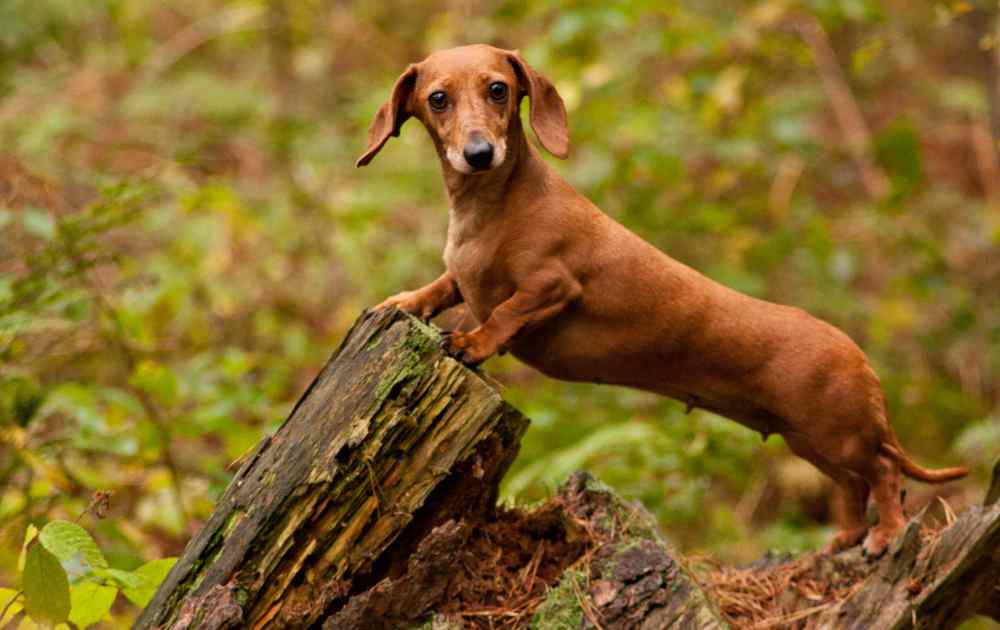
Smooth haired dachshunds have a sleek and shiny appearance, and their coat is typically a solid colour. They come in colours like red, black, chocolate, and cream.
The best part? They are the low-maintenance dachshund when it comes to grooming! A few brushes here and there and the occasional bath are enough to keep them looking their best. Don’t forget to keep their nails trimmed and their ears clean, though, to avoid any health issues.
Wirehaired Dachshunds
If you’re looking for a scruffy little buddy, the wirehaired dachshund is the one for you! Their wiry coat was bred for hunting and provides extra protection in the German forest.
Wirehaired dachshunds are often described as having a scruffy or unkempt appearance, but this only adds to their charm. They have a thick undercoat and a rough outer coat that requires regular grooming to prevent matting.
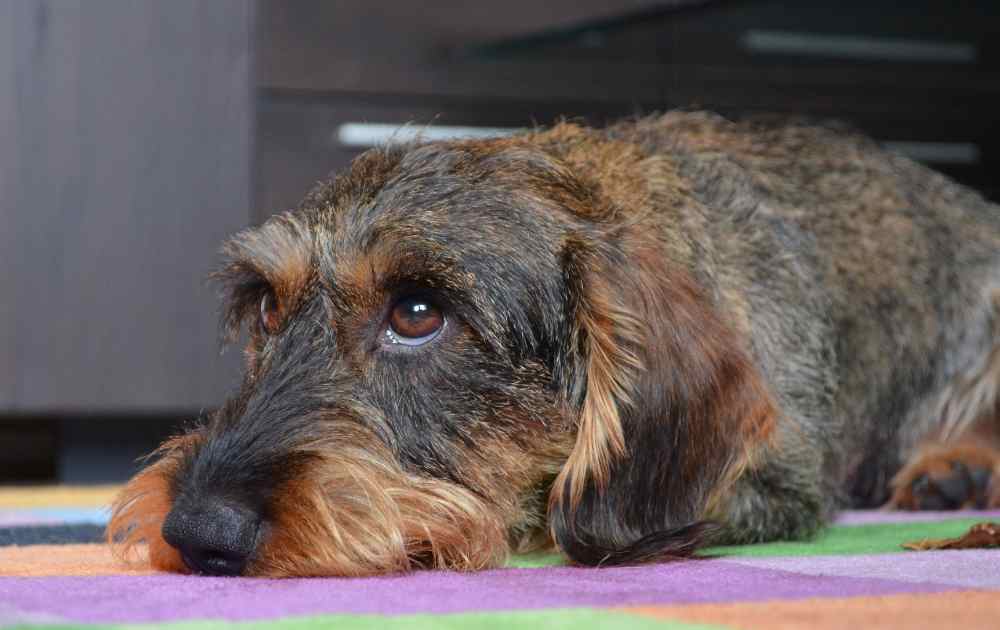
These little pups come in a variety of colours and even have unique patterns and variations. The most common colours are red, black and tan, chocolate and tan, and wild boar. They may also have white markings on their chest and feet. The wirehaired coat can also be mixed with other colours, creating unique patterns and variations.
Maintaining the coat of a wirehaired dachshund requires a bit more effort than a smooth coat dachshund. Regular brushing and trimming is necessary to prevent matting, and you should also keep their ears and paws clean to avoid infections. Don’t let the grooming scare you away, though, as the wirehaired dachshund’s charm and personality make it all worth it.
Longhaired Dachshunds
If you’re looking for a furry companion, the longhaired dachshund may be the perfect breed for you. These elegant little dogs have beautiful, flowing coats that require a bit of extra TLC.
Longhaired dachshunds have a similar body shape to smooth haired dachshunds, but their hair is longer and softer. They are often considered the most elegant of the three coat types.
Their luxurious coats are soft and silky to the touch and make them look like royalty.
Long coat dachshunds have a gentle and affectionate personalities, and they are known for being loyal and devoted to their owners. They are also quite intelligent and have a great sense of humour.
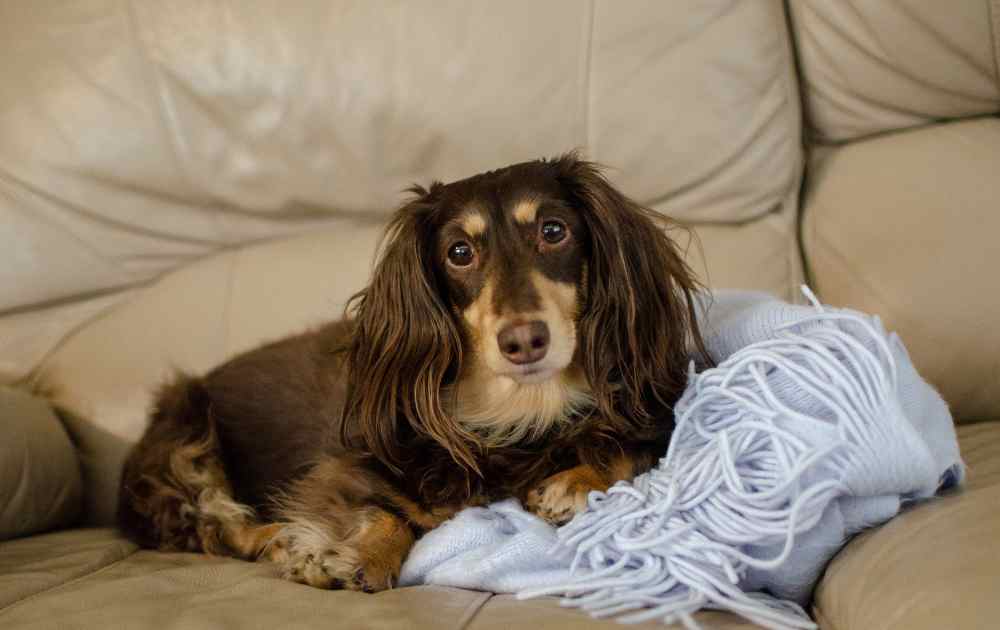
Common Coat Colours for Longhaired Dachshunds
Longhaired dachshunds come in a variety of colours, including red, black and tan, English cream, and chocolate. They can also be a combination of these colours or have dapple or brindle patterns.
Longhaired dachshunds require regular grooming to keep their coat healthy and shiny. This includes daily brushing to prevent matting and regular trimming of the hair around their ears and paws.
It’s also important to pay attention to their ears and eyes, which can be prone to infections. However, with proper care, longhaired dachshunds make wonderful pets with their sweet temperament and affectionate nature.
Other Dachshund Coat Types
While the smooth, wirehaired, and longhaired dachshunds are the most common coat types, there are a few other coat variations that are less prevalent. One such type is the double dapple, which has a mottled appearance and often comes in shades of cream and brown.

Another is the piebald, which has a white base with patches of another colour. The brindle dachshund has a striped appearance, while the sable dachshund has a reddish-brown coat.
No matter the coat type, it’s important to note that regular grooming and maintenance are essential for keeping your dachshund’s coat healthy and looking its best.
Dachshund Coat Colours
Let’s talk more about the most exciting part of dachshunds’ coats: the colours! Dachshunds come in a variety of hues and patterns, from classic black and tan to rarer shades like Isabella and cream.
Some dachshunds have a single solid colour, while others boast a combination of two or more colours, such as dapple or piebald. And let’s not forget the striking brindle coat, which features a tiger-like pattern that will have you doing a double-take!
With so many colours to choose from, you can find a dachshund to match any decor. Just imagine, you could have a smooth-coated red dachshund that blends in with your red velvet sofa or a longhaired black and tan dachshund that matches your sleek leather jacket. The possibilities are endless!
Factors to Consider When Choosing a Dachshund Coat Type
Choosing a dachshund coat type can be a big decision, and there are a few factors to keep in mind before making your choice.
The first thing to consider is your lifestyle and activity level. For example, if you’re an active person who enjoys spending time outdoors, a wirehaired or longhaired dachshund might be a better fit as they are more durable and able to withstand rough terrain.
On the other hand, if you’re looking for a low-maintenance companion, a smooth coat dachshund might be the best option as they require less grooming.
Personal preference is also important – do you have a particular coat colour or texture that you find especially appealing?
Finally, if you or someone in your household suffers from allergies or is sensitive to shedding, a smooth coat dachshund may be the most suitable option.
Which Coat Type is Right for You?
When choosing a dachshund, it’s important to consider your lifestyle and personal preferences.
- Smooth dachshunds are great for families who don’t have a lot of time to groom their dog.
- Wirehaired dachshunds are ideal for those who want a dog with a little more texture to its coat.
- Longhaired dachshunds are perfect for those who enjoy spending time grooming their dog and appreciate the beauty of a silky coat.
Grooming Tips for Dachshund Coats
Proper grooming is essential to maintaining the health and appearance of your dachshund’s coat. Here are some grooming tips for each type of coat:
Smooth Coat
Smooth coats require minimal grooming. Brushing once a week with a soft-bristled brush can help remove loose hair and dirt. Bathing should be done as needed, using a mild dog shampoo.
Wirehaired Coat
Wirehaired coats require regular trimming and stripping to maintain their shape and texture. This should be done by a professional groomer. Brushing once a week with a slicker brush can help remove loose hair and prevent matting.
Longhaired Coat
Longhaired coats require regular brushing to prevent matting and tangling. Brushing should be done at least once a week using a slicker brush. Regular trimming around the ears, feet, and anus can help keep the coat clean.
Professional Grooming
While you can groom your dachshund at home, it’s also a good idea to take them to a professional groomer every few months. Professional groomers can trim their nails, clean their ears, and give them a thorough bath and brush. This can help keep their coat in good shape and prevent any skin issues.
Seasonal Grooming
It’s important to adjust your dachshund’s grooming routine based on the season. During the summer months, they may need more frequent baths to help keep them cool and prevent skin irritation. In the winter, they may need less frequent baths to prevent their skin from drying out. It’s also important to regularly check their paws for any signs of irritation or injury.
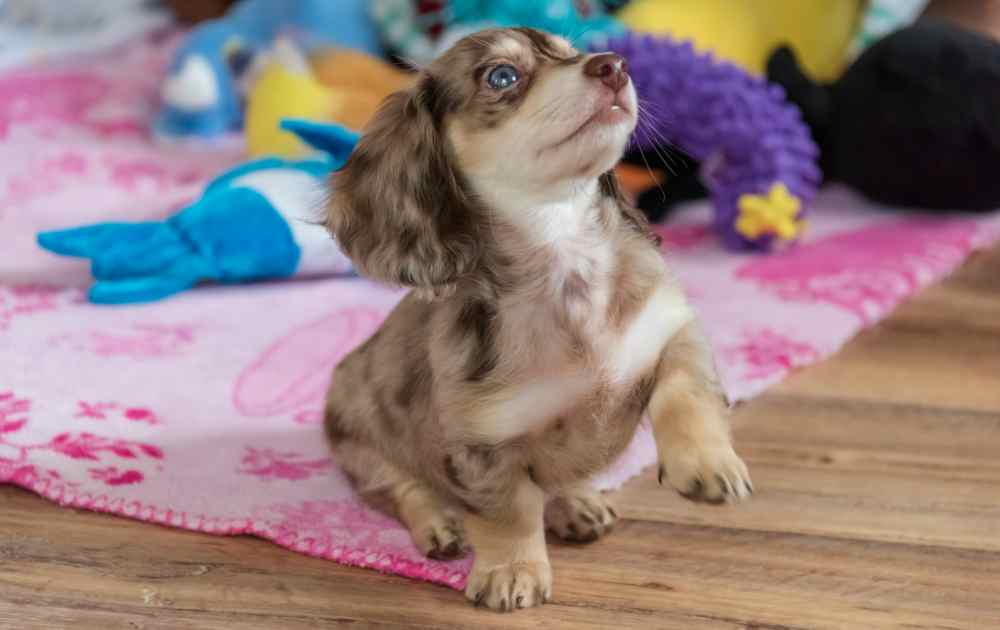
Summary
In conclusion, no matter what coat type you choose, the dachshund breed is full of love, loyalty, and playfulness. Their unique coats only add to their adorable charm, and with proper care and maintenance, they will make the perfect furry friend.
Remember, whether you prefer the sleek and shiny smooth coat, the wild and wacky wire coat, or the luxurious long coat, there’s a dachshund for everyone. And if you’re feeling adventurous, why not check out some of the more unusual coat types like the dapple, piebald, or brindle?
But before you rush out to bring home your new furry friend, remember to consider your lifestyle and activity level, personal preferences, and any allergies or shedding concerns. And don’t forget to give your dachshund’s coat the love and care it deserves, whether it’s with regular grooming, healthy nutrition, or fashionable accessories.
So, which coat type will you choose?
FAQs
Q: Can Dachshunds be hypoallergenic?
A: Unfortunately, no. Dachshunds are not a hypoallergenic breed, and they can still trigger allergies in some people.
Q: How often should I groom my dachshund?
A: How often you groom your dachshund depends on their coat type. Smooth dachshunds require regular brushing, while wirehaired and longhaired dachshunds require more frequent grooming to prevent matting.
Q: Do dachshunds shed a lot?
A: Smooth dachshunds shed moderately, while wirehaired and longhaired dachshunds shed less. Regular brushing can help keep shedding under control.
Q: Can dachshunds live in cold climates?
A: Yes, dachshunds can live in cold climates, but they may need extra protection to keep them warm during the winter months. A sweater or coat can help keep your dachshund warm when the temperature drops.
Q: Are dachshunds good with children?
A: Dachshunds can be great family dogs and are generally good with children. However, it’s important to supervise interactions between young children and dogs to ensure that both are safe.


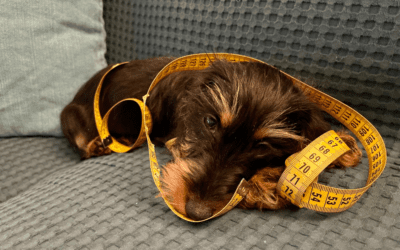
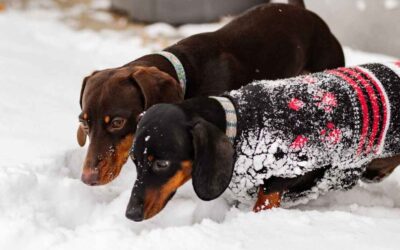

0 Comments